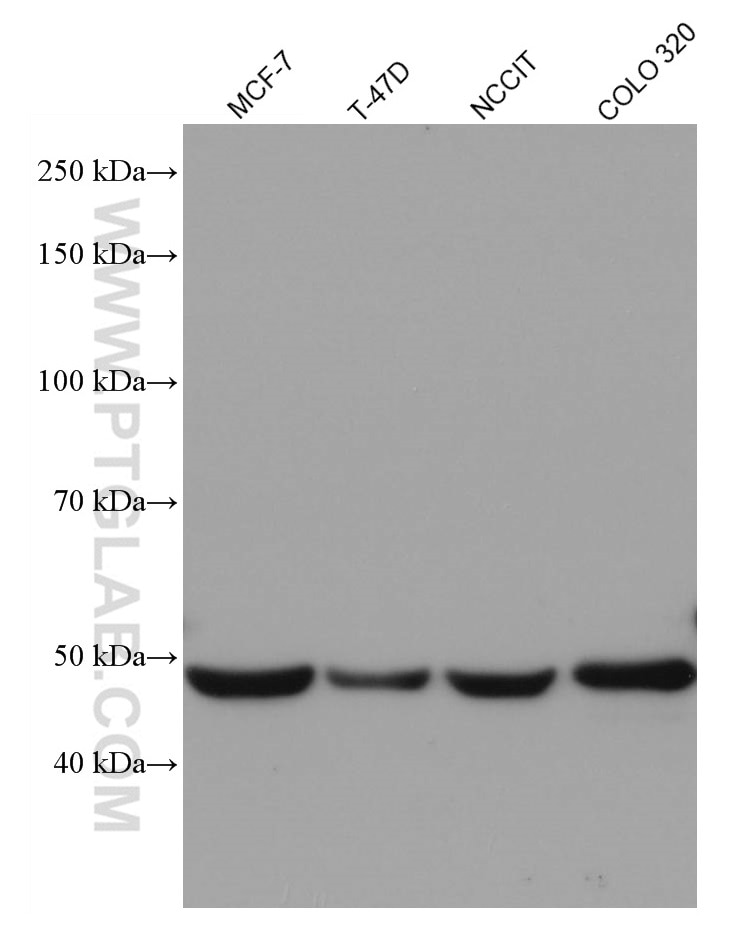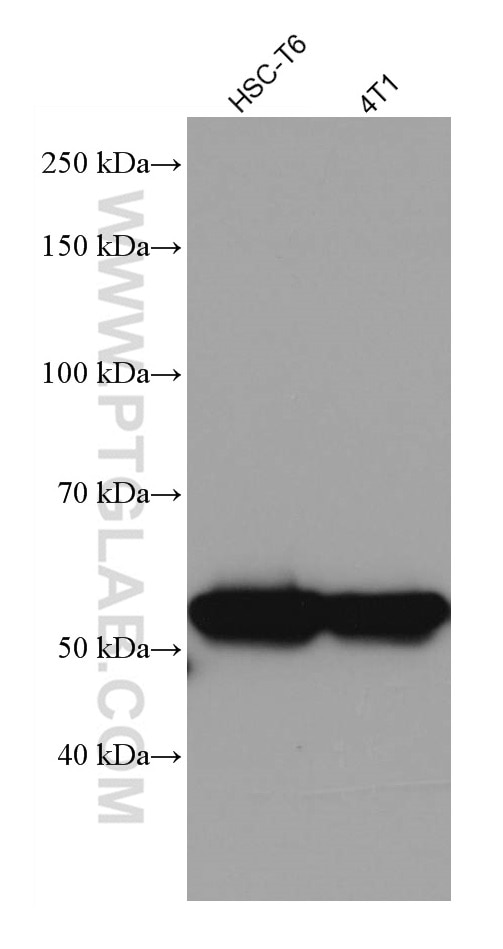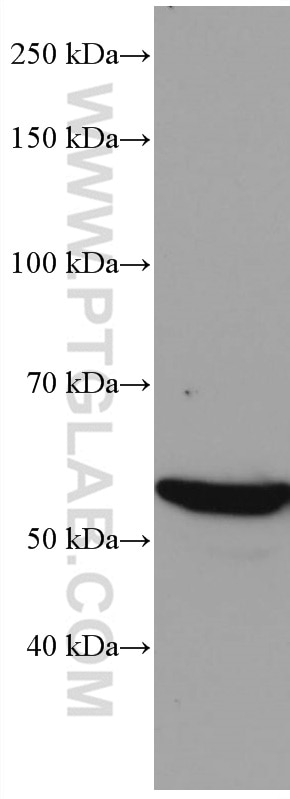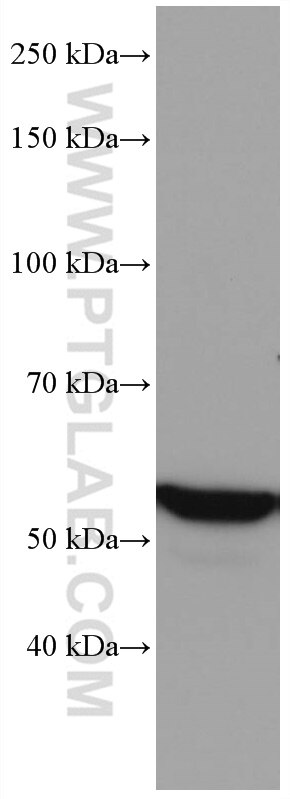- Phare
- Validé par KD/KO
Anticorps Monoclonal anti-VDR
VDR Monoclonal Antibody for WB, ELISA
Hôte / Isotype
Mouse / IgG2a
Réactivité testée
Humain, rat, souris
Applications
WB, IF, ChIP, ELISA
Conjugaison
Non conjugué
CloneNo.
1A9C1
N° de cat : 67192-1-Ig
Synonymes
Galerie de données de validation
Applications testées
| Résultats positifs en WB | cellules MCF-7, cellules 4T1, cellules COLO 320, cellules HeLa, cellules HSC-T6, cellules NCCIT, cellules T-47D |
Dilution recommandée
| Application | Dilution |
|---|---|
| Western Blot (WB) | WB : 1:2000-1:10000 |
| It is recommended that this reagent should be titrated in each testing system to obtain optimal results. | |
| Sample-dependent, check data in validation data gallery | |
Applications publiées
| KD/KO | See 2 publications below |
| WB | See 12 publications below |
| IF | See 4 publications below |
| ChIP | See 1 publications below |
Informations sur le produit
67192-1-Ig cible VDR dans les applications de WB, IF, ChIP, ELISA et montre une réactivité avec des échantillons Humain, rat, souris
| Réactivité | Humain, rat, souris |
| Réactivité citée | rat, Humain, souris |
| Hôte / Isotype | Mouse / IgG2a |
| Clonalité | Monoclonal |
| Type | Anticorps |
| Immunogène | VDR Protéine recombinante Ag28188 |
| Nom complet | vitamin D (1,25- dihydroxyvitamin D3) receptor |
| Masse moléculaire calculée | 48 kDa |
| Poids moléculaire observé | 48-55 kDa |
| Numéro d’acquisition GenBank | BC060832 |
| Symbole du gène | VDR |
| Identification du gène (NCBI) | 7421 |
| Conjugaison | Non conjugué |
| Forme | Liquide |
| Méthode de purification | Purification par protéine A |
| Tampon de stockage | PBS avec azoture de sodium à 0,02 % et glycérol à 50 % pH 7,3 |
| Conditions de stockage | Stocker à -20°C. Stable pendant un an après l'expédition. L'aliquotage n'est pas nécessaire pour le stockage à -20oC Les 20ul contiennent 0,1% de BSA. |
Informations générales
The vitamin D receptor (VDR), also known as NR1I1 (nuclear receptor subfamily 1, group I, member 1), is a member of the nuclear receptor family of transcription factors. Upon activation by vitamin D, the VDR forms a heterodimer with the retinoid-X receptor and binds to hormone response elements on DNA resulting in expression or trans-repression of specific gene products.It is an intracellular hormone receptor that specifically binds 1,25(OH)2D3 and mediates its effects. Downstream targets of this nuclear hormone receptor are principally involved in mineral metabolism though the receptor regulates a variety of other metabolic pathways, such as those involved in the immune response and cancer. Defects in VDR are the cause of rickets vitamin D-dependent type 2A (VDDR2A). A disorder of vitamin D metabolism results in severe rickets, hypocalcemia and secondary hyperparathyroidism. Most patients have total alopecia in addition to rickets. The VDR exists two isoform with the MV 48 kDa and 54 kDa.
Protocole
| Product Specific Protocols | |
|---|---|
| WB protocol for VDR antibody 67192-1-Ig | Download protocol |
| Standard Protocols | |
|---|---|
| Click here to view our Standard Protocols |
Publications
| Species | Application | Title |
|---|---|---|
Antioxidants (Basel) Fibroblast Upregulation of Vitamin D Receptor Represents a Self-Protective Response to Limit Fibroblast Proliferation and Activation during Pulmonary Fibrosis | ||
Front Pharmacol Bacteroides dorei BDX-01 alleviates DSS-induced experimental colitis in mice by regulating intestinal bile salt hydrolase activity and the FXR-NLRP3 signaling pathway | ||
Front Cell Dev Biol Single-Cell Transcriptomics Reveals the Molecular Anatomy of Sheep Hair Follicle Heterogeneity and Wool Curvature. | ||
Eur J Pharmacol Vitamin D3 analogue calcipotriol inhibits the profibrotic effects of transforming growth factor- β1 on pancreatic stellate cells | ||
Phytomedicine Asperuloside inhibited epithelial-mesenchymal transition in colitis associated cancer via activation of vitamin D receptor.
| ||
Front Microbiol Vitamin D3 Suppresses Human Cytomegalovirus-Induced Vascular Endothelial Apoptosis via Rectification of Paradoxical m6A Modification of Mitochondrial Calcium Uniporter mRNA, Which Is Regulated by METTL3 and YTHDF3.
|





